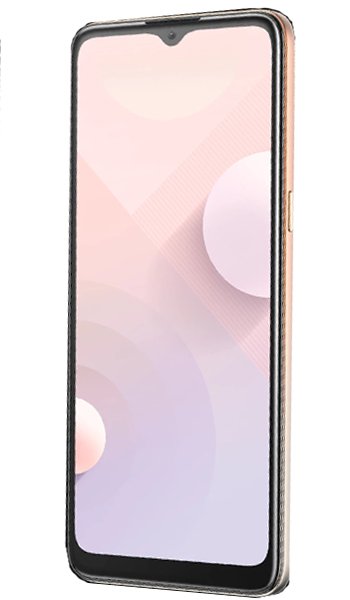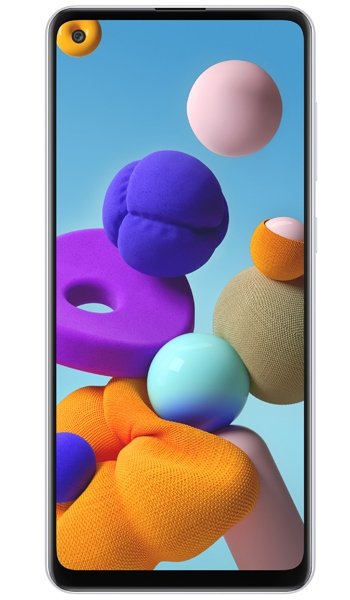HTC Desire 20+ vs Samsung Galaxy A21s Comparación y Diferencias
Smartphone 1

HTC Desire 20+
Smartphone 2

Samsung Galaxy A21s
Smartphone 3
HTC Desire 20+ o Samsung Galaxy A21s Comparación de características
o
 Características
Características
| Marca y modelo | HTC Desire 20+ | Samsung Galaxy A21s | |
| Votos | (+) | (+) | |
| Fecha de lanzamiento | 2020, Octubre 19 | 2020, Mayo 15 | |
| Dimensiones (AlxAnxProf) | 164.9 Х 75.7 Х 9 mm | 163.7 Х 75.3 Х 8.9 mm | |
| Peso | 203 g | 192 g | |
| Funda | Comprar en Amazon | Comprar en Amazon | |
| Colores | Dawn Orange, Twilight Black | Black, White, Blue, Red | |
| Batería | 5000 mAh, Li-Po, no extraíble | 5000 mAh, No extraíble, Li-Po | |
| Precio indicativo | 250 EUR | 190 EUR | |
| Consultar precio | en Amazon | en Amazon |
 Pantalla
Pantalla
| Tecnología | IPS LCD | PLS TFT | |
| Pantalla táctil | sí, capacitiva | sí, capacitiva | |
| Profundidad del color | 16M | 16M | |
| Tamaño | 6.5" inc | 6.5" inc | |
| Área de la pantalla | 102.0 cm2 | 102.0 cm2 | |
| Proporción (Altura:Ancho) | 20:9 (Al:An) | 20:9 (Al:An) | |
| Proporción (pantalla:cuerpo) | 81.7% | 82.8% | |
| Resolucion | 720 x 1600 px | 720 x 1600 px | |
| Puntos por pulgada | 270 PPI | 270 PPI | |
| Protector de pantalla | Comprar en Amazon | Comprar en Amazon |
 Cámaras y vídeo
Cámaras y vídeo
| Cámara trasera principal | 48 MP, cámara cuádriple | 48 MP, cámara cuádriple | |
| Cámara especificaciones |
-48 MP, f/1.8, 26mm (gran angular), 1/2.0'', 0.8µm, PDAF -5 MP, f/2.2, 115˚ (ultra gran angular) -2 MP, f/2.4, (macro) -5 MP, f/2.4, (sensor de profundidad) |
-48 MP, f/2.0, 26mm (gran angular), 1/2.0", 0.8µm, PDAF -8 MP, f/2.2, 123˚ (ultra gran angular), 1/4.0", 1.12µm -2 MP, f/2.4, (macro) -2 MP, f/2.4, (sensor de profundidad) |
|
| Funciones | doble LED flash, HDR, panorama | LED flash, panorama, HDR | |
| Vídeo | 4K@30fps, 1080p@30fps | 1080p@30fps | |
| Cámara frontal (selfie) | 16 MP, cámara singular | 13 MP,cámara singular | |
| Características | -16 MP, f/2.0, (gran angular) | -13 MP, f/2.2, (gran angular), 1/3.1'', 1.12µm | |
| Funciones | HDR | ||
| Vídeo | 1080p@30fps | 1080p@30fps |
 Rendimiento
Rendimiento
| Sistema Operativo (OS) | Android 10 | Android 10, One UI 2.0 | |
| Chipset | - Qualcomm SM7125 Snapdragon 720G (8 nm) | - Exynos 850 (8nm) | |
| Procesador central (CPU) | Octa-core (2x2.3 GHz Kryo 465 Gold & 6x1.8 GHz Kryo 465 Silver) | Octa-core (4x2.0 GHz Cortex-A55 & 4x2.0 GHz Cortex-A55) | |
| Procesador de gráficos (GPU) | Adreno 618 | Mali-G52 | |
| Tarjeta de memoria externa | microSDXC | microSDXC (slot dedicado) | |
| Memoria Interna | 128GB 6GB RAM | 32GB 3GB RAM, 64GB 4GB RAM, 64GB 6GB RAM |
 Benchmark
Benchmark
| Antutu 9 Total | 332639 | ||
| Antutu 8 Total | 117324 | ||
| GeekBench 6 Single Core | 202 | ||
| GeekBench 6 Multi Core | 844 | ||
| GeekBench 6 OpenCL | 665 | ||
| GeekBench 6 Vulkan | 596 | ||
| GeekBench 5 Single Core | 173 | ||
| GeekBench 5 Multi-Core | 989 |
 Comunicación y conectividad
Comunicación y conectividad
| Tarjeta SIM | Dual SIM (Nano-SIM, modo de espera dual) | única tarjeta SIM (Nano-SIM)Dual SIM (Nano-SIM, modo de espera dual) | |
| Red | GSM / HSPA / LTE | GSM / HSPA / LTE | |
| Frecuencias | -2G - GSM 850 / 900 / 1800 / 1900 - SIM 1 & SIM 2 -3G - HSDPA 850 / 900 / 1900 / 2100 -4G - 1, 3, 5, 7, 8, 20, 28, 38, 40, 41 |
-2G - GSM 850 / 900 / 1800 / 1900 - SIM 1 & SIM 2 (dual-SIM model only) -3G - HSDPA 850 / 900 / 1900 / 2100 -4G - LTE |
|
| Velocidad de internet | HSPA 42.2/5.76 Mbps, LTE-A, Cat6 300/75 Mbps | HSPA 42.2/5.76 Mbps, LTE-A | |
| GPRS | Si | Si | |
| Edge | Si | Si | |
| Wi-Fi | Wi-Fi 802.11 a/b/g/n/ac, banda dual, Wi-Fi Direct, hotspot | Wi-Fi 802.11 a/b/g/n/ac, banda dual, Wi-Fi Direct, hotspot | |
| GPS | Si, dependiente del mercado A-GPS, GLONASS, GALILEO, BDS | Si, dependiente del mercado A-GPS, GLONASS, GALILEO, BDS | |
| NFC | Si | Si | |
| USB | USB Type-C 2.0, USB On-The-Go | 2.0, Type-C 1.0 conector reversible | |
| Bluetooth | 5.0, A2DP, LE | 5.0, A2DP, LE | |
| Radiación dañina |
SAR EU - 0.42 W/kg (cabeza) 1.54 W/kg (cuerpo) |
 Música y Audio
Música y Audio
| Radio | No | ||
| Jack de auriculares | Sí | Sí |
 Otros extras
Otros extras
| Sensores | - Sensor de huella digital (en la parte trasera), Acelerómetro, Giroscopio, Sensor de proximidad, brújula | - Sensor de huella digital (en la parte trasera), Acelerómetro, Giroscopio, Sensor de proximidad, brújula | |
| Otros extras |
- Carga rápida 15W -Quick Charge 4.0 |
- Carga rápida 15W |
|
| Versiones |
- También conocido como: HTC Desire 20 Plus |
- Versiones: SM-A217F/DS |
Opiniones y comentarios sobre HTC Desire 20+ y Samsung Galaxy A21s
Si tuvieras que recomendar uno de estos teléfonos a un amigo, ¿cuál sería y por qué? Comparte tus argumentos utilizando el botón Añadir Opinión!

